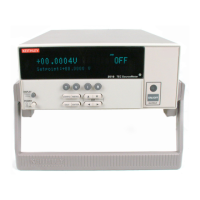Model 2510 and 2510-AT
TEC SourceMeter
®
User’s Manual
©2001, Keithley Instruments, Inc.
All rights reserved.
Cleveland, Ohio, U.S.A.
Fifth Printing, February 2002
Document Number: 2510-900-01 Rev. E
All references to the Model 2510 apply to the
Model 2510-AT unless otherwise specified.

